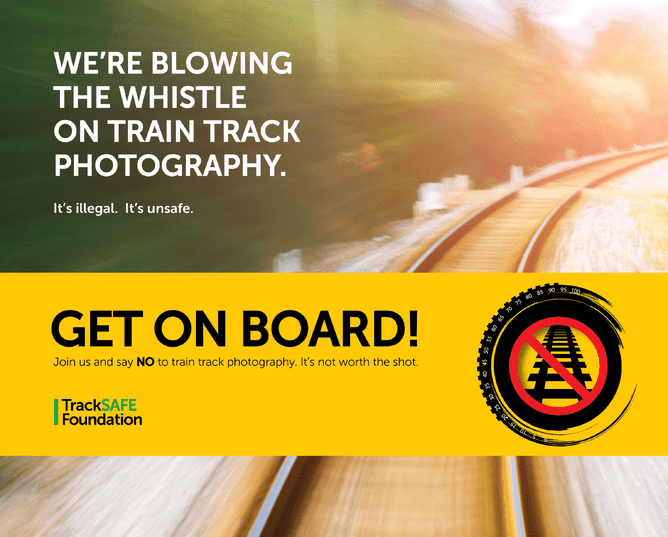TrackSAFE is blowing the whistle this March on an increasing number of Kiwis who are using train tracks as a backdrop for photography, from members of the public, to clothing labels and even musicians.
TrackSAFE NZ Foundation Manager Megan Drayton says photography for creative campaigns on train tracks and at level crossings is a growing issue in New Zealand and TrackSAFE is being contacted frequently about people using railway tracks as a backdrop for their photography.
“Almost every week we are contacted about people using railway tracks as part of their fashion label launch, music video, wedding photos or media story,” says Megan.
“While creatives may think train tracks provide the perfect backdrop, what they don’t realise is trespassing on the rail corridor is the leading cause of rail deaths both in New Zealand, and overseas,” says Megan.
In 2021 fashion label Augustine removed photos from its social media account of a model taken on train tracks after members of the public complained, recognising that using the track as a backdrop was illegal, irresponsible, and did not set a good example.
New Zealand musician Stan Walker has also come under fire for filming one of his latest music videos on train tracks.
“With a rise in the use of smartphones and selfies over the last decade, capturing a track shot is easier and more popular than ever but we’re asking photographers, creatives or agencies to not take photos on the train tracks. It’s illegal, it’s not safe and it’s not worth the shot.
“Trains travel at up to 100km/h in rural areas and they can approach from either direction. They don’t always run to schedule so they can appear at any time, and a train travelling at full speed can take up to one kilometre to stop,” says Megan.
“People don’t understand that once a train driver sees you on the tracks, it is usually too late to stop the train.”
Research has also shown people cannot accurately predict the speed of an approaching train.
In addition, the electric trains used in metro areas are almost completely silent, meaning people would not hear them coming.
In 2013 a New Zealand rail enthusiast was killed while trying to get a photo of a train, says Megan.
“The toll that fatal incidents and even near misses take on the mental health of our locomotive engineers and on victims’ families is huge.” says Megan.
To learn more about this issue and find out how you can show your support, please visit TrackSAFE NZ’s website.

